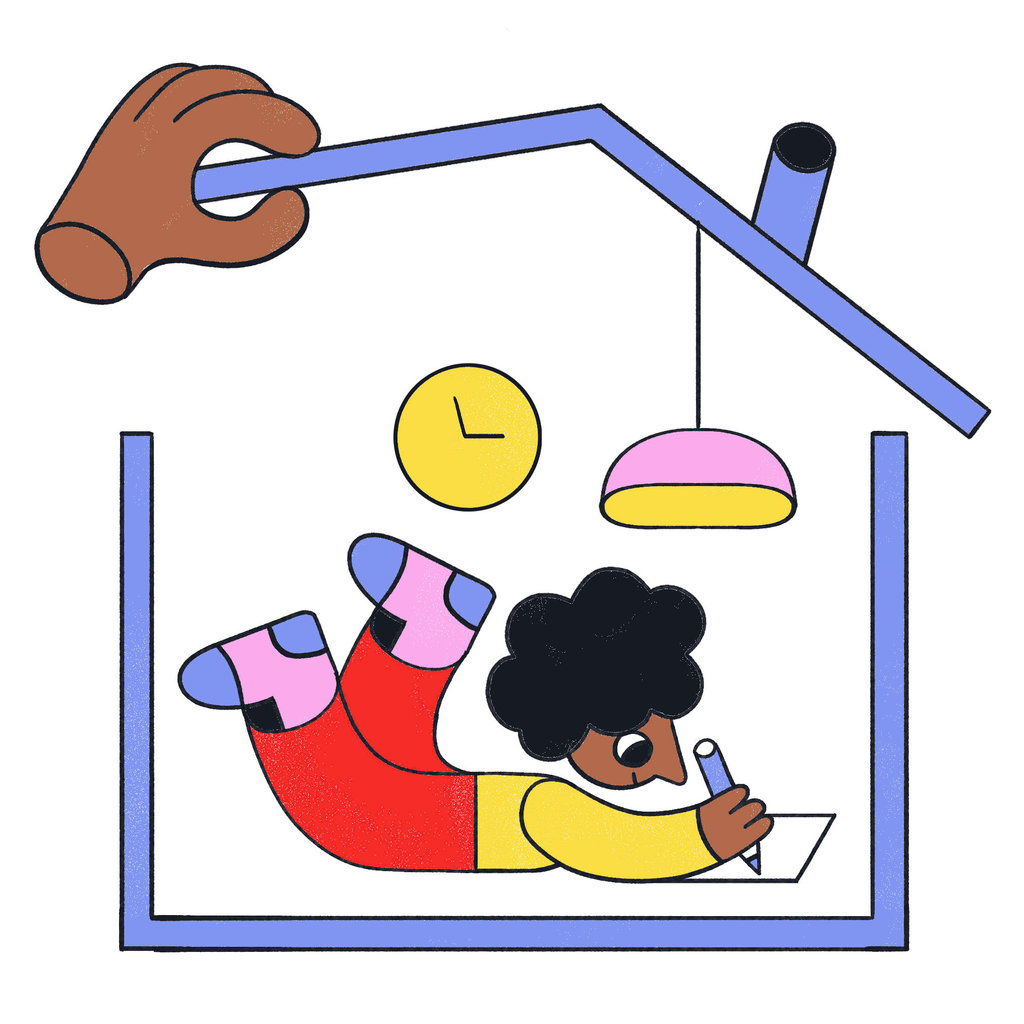How to Help Your Child Succeed At School
In the high-pressure, high-stakes game of school, it can be difficult to know which parenting strategies really promote learning. A successful experience in school is not only about report cards. Ideally your child will learn how to learn, retain information, think independently, ask questions and develop an increasing sense of competence. Here are some guidelines for making sure you start on the right foot and keep enthusiasm and momentum high throughout the school year.
Key Values
There is so much to think about each school year, but above all else, these simple rules can help keep you focused on what’s most important for school success.

Do
- Focus on the process, not the product.
- Encourage kids to self-advocate.
- Keep a long-term perspective.
- Maintain a healthy sleep schedule.
- Love the child you have, not the child you wish you had.
Don’t
- Overschedule.
- Worship grades.
- Encourage helplessness.
- Compare kids to one another.
- Love kids based on their performance.
Value the Process Over the Product
Very young children are naturally driven to learn and explore. They are at the very beginning of their lifelong quest to understand and gain mastery of the world around them. As they reach out, fall and get back up again, they gain a heightened sense of mastery, competence and self-efficacy. Somewhere around kindergarten, however, parents and teachers begin to undermine this process by devaluing the process of learning and replacing it with a mad dash for the end products. Suddenly, the intrinsic motivators of natural curiosity, competence and self-efficacy are less valuable than extrinsic motivators such as stickers, points and grades. Unfortunately, extrinsic motivators undermine kids’ desire to learn over the long term. Want your kid to lose interest in school? Pay them for their A’s and worship at the altar of grades. If you’d instead like your kids to remain curious and hungry for mastery, here are some tips for re-orienting kids’ priorities.
- Keep report cards off social media and the refrigerator. We can tell our kids that we value learning all we want, but when we gush over grades and stick them to the refrigerator, we show them that what we value most are the grades. Of course, grades are what most parents are stuck with, even if they are flawed and incomplete indicator of learning as well as what’s known as an “extrinsic motivator,” which has been shown to reduce motivation over the long term, undermine creativity, and encourage cheating. Some schools have moved away from letter-based grades and are using reports focused on mastery- or standards-based evaluations, which can help parents and kids focus on what’s being learned rather a grade. No matter what kind of report your child gets, humble-bragging about it on social media only feeds parental competition, raises the pressure for kids and teaches them that your love and approval is contingent on the content of their report card.
- Focus on the process they used to get that grade. When we invest less energy and emotion in the number or letter at the top of the page, we can begin to ask our children questions such as, What did you do to get this grade? Which study techniques worked for you and which ones did not? What are you going to do differently next time?
- Look forward, not back. The best question parents can ask when faced with a grade, whether high or low, is: How are you going to use this experience to be better next time? This technique works particularly well for anxious and overly perfectionist kids, because they can get stuck in a negative feedback loop, obsessing wholly on the numbers and grades. Helping them shift their focus back to the process can alleviate that anxiety, particularly when we help them prioritize the aspects of learning they can control.
Model: Talk about your own failures and successes with your kids, showing them that you, too, are invested in the process of learning. If you berate yourself over failures, so will they. If, however, they see you being brave and learning from your mistakes so you can be better next time, so will they.
Value Goals Over Grades
One easy way to invest in process is to set goals, both individually and as a family. Try to do this at the beginning of a new school year, the first of the month, or the beginning of a new season. Keep the discussion light and low-pressure. This process isn’t about getting better grades, it’s about supporting learning as a family.
Everyone (yes, that means parents, too) sets three short-term, achievable goals oriented around tasks and improvements under your control. For example, “I’m going to get all A's this semester” is too broad and too difficult to control. Instead, try “I’m going to ask for help in math more often,” “I will plan one extra help session a week,” or “I will practice my multiplication three extra times this month.”
One of those three goals should be a challenge. We can’t hope to convince our children to be emotionally and intellectually brave unless they see us do the same, so set some goals that get you out of your comfort zone. Take guitar or dance or Spanish lessons, try an activity you have never tried before, or pick up a new hobby. This is, after all, how we expand our cognitive potential and make new connections in our brains that can help us become stronger, smarter and more efficient learners.
A few years ago, one of my sons’ goals was to make a few new friends, a goal that was both challenging and important to him.
Before you set new goals, take the time to assess how everyone did on past goals. Review these goals once a month or once a semester. If you fail to achieve your goals talk about why, and what you plan to do differently next time. If you succeed, celebrate that achievement!
Model: Watching a parent set a scary, ambitious goal and talk about the process of achieving it is the most direct way to teach children that learning and striving to be better are human goals, not just school goals.
Maintain a Long-Term Perspective
Education and parenting are both long-haul endeavors, and improvements don’t happen on a daily basis.
- Don’t live in the daily emergency of this homework or this test. Instead, think about where you’d like your child to be in a year or five years in terms of competence and growth. Which is more important to you, that you deliver your child’s forgotten math homework today or that she develops a strategy for not forgetting her math homework tomorrow?
Model: When things go wrong in your own life, talk about them. Keep your focus on doing better next time and your long-term perspective. For example if you mess up at work, frame your discussion around improvement and long-term progress: “Well, this work project did not work out the way I wanted, but I still love what I do and want to be doing something related in five years. Here’s how I plan to learn from this so I can get there.”
Help Them Find Balance
Kids are overscheduled, families are in a constant rush, but a few, strategic pauses in your family’s day can make a huge difference.

Help Kids Create Effective Good Routines
Present mornings, chores and homework time to kids as a problem to be solved together. In a quiet, calm moment, say, “You know, mornings are really hectic around here and it’s hard for everyone to remember to get out the door with everything they need. How do you think we can make mornings easier and happier?”
Kids are more likely to stick with a plan they created themselves. Buy-in happens most often when kids have a hand in creating strategies, and sometimes it’s more important to be functional and efficient than to be right.
Try asking, “What would your ideal morning routine look like?” or “What would a perfect homework day look like for you?” then help them come up with ways to make those visions real.
Help kids operationalize the systems they create. If it’s a planbook, talk about setting intermediary deadlines. If it’s alarms on a virtual calendar, try different sequences of alerts ahead of a due date. Think of your role in this process like that of the training wheels on your kid’s bike. As our children get more sure of their strategies and systems, we can raise the training wheels up until they are no longer needed at all.
Model: Talk about your own systems, when they fail, why they work for you. As I get older, I find I have to write more things down or I will forget them. When I do, I mention this to my kids, and they have even helped me brainstorm ways to get things down on paper before I lose them to the ether.
Encourage Good Study Habits
- Ensure quiet time in your home. Multi-tasking is a myth, especially for kids. Shut off the TV, and if they like to play music, studies show that music with lyrics undermines concentration and productivity.
- Ask your kids what their perfect homework routine might look like. Help them create that vision. Some kids might want a break after school to blow off pent-up energy, others may want to get the homework done first so they can get on to free play. Let them choose the space, too. Just because you envisioned a central study location in your home when you designed it does not mean it’s going to be their preferred spot.
- Limit phones during homework time. Phones are a distraction when they are in the room, even when they are turned off, one study shows. If they are a distraction for adults, with their fully mature executive function skills, they are even more distracting for kids, whose frontal lobes (and the executive function skills that originate there) won’t be fully mature until their mid-20s.
Model: Let kids see you working distraction-free, in an environment that promotes focus. As ever, kids do what we do, not what we say. Work on your projects the way you’d like to see them doing their work.
Plan for Technology Use
Have a plan in place for family tech usage. This can be around minutes, data or context. If you want family dinners and homework to be tech-free zones, agree to that ahead of time. Then sign a tech contract. Some kids respond to the clarity of a signed contract you can point to for reference. Here are some contracts I love, from Juliana Miner, author of “Raising a Screen Smart Kid” and Devorah Heitner, author of “Screenwise.”
Model: When I ask kids what they’d most like me to convey to their parents at my speaking events, one of comments I hear most often is something like: “If you want us to turn our phones off, or spend less time texting with our friends, then parents should do the same.” When we ask kids to make sacrifices we are not willing to make ourselves, they see us.
Communication Between School and Home
When students, parents and teachers communicate openly and honestly with each other about what’s happening at home and in the classroom, everyone can stay focused on the learning.

Keep School-Home Lines of Communication Open
The research is clear: Family involvement and positive home-school communication have been associated with improved grades, positive behavior and attitudes about learning, increased participation and increased attendance. Start by finding out how your child’s teacher would like to be contacted, and honor his or her preferences by sticking to that method.
When something comes up, go to the teacher first, and not to the principal. That is unfair to both the principal and the teacher. Besides, the principal most likely was not present in your child’s classroom to witness the events in question, so it puts him or her in an awkward position.
Remember the good moments too. Thank teachers for their efforts on behalf of your child. Thanking teachers lets them know that you respect and appreciate what they do and how they do it. I have an envelope full of these notes accumulated over 20 years of teaching Latin, English and writing, and I often refer back to them when I’m having a bad day or feeling unappreciated. Gratitude matters.
Model: Don’t bash or undermine a teacher in front of the kids. Kids hear what you say about their teachers, and it’s essential to preserve the student-teacher relationship at all costs. It can be confusing for kids when parents say negative things about their teachers, just as it’s upsetting when one parent speaks ill of the other during a separation or divorce.
Promote Self-Advocacy
Starting as early as kindergarten, children need to be encouraged to speak up, tell adults what they need, and stand up to people who are not treating them the way they want to be treated. Self-advocacy is a key part of building a child’s sense of self- efficacy, or the understanding that they have the power to control and change their behavior, motivation and environment.
When your children come to you to complain about how another child or a teacher treated them, ask what they said or did (or what they plan to say or do) to make sure they are heard and understood. Simply asking this question can help children reframe the situation and consider what they can do to effect change themselves.
Expect children to be a part of home-school communication from the first day of elementary school and increase your expectations for their involvement each year until your child is the main conduit of information between home and school. You can provide support, of course, but somewhere around the beginning of middle school, your child should take the lead.
Get support for your efforts to boost their self-advocacy. Let teachers know you are making this shift so they can support your child’s efforts to be more effective in their communication.
Coach your children through talking with teachers about problems and talk through the approaches they can take. You can write scripts or role play if a child is anxious about the discussion. This can actually be a fun way to dispel anxiety and play-act the conversation until your child is comfortable.
If children are facing especially stressful challenges as a result of bullying, special education needs or mental health issues, school counselors can be parents’ greatest ally. Today’s school counselors are mental health professionals who are able to guide students in school and provide referrals as needed to other mental health and academic support professionals in the community. They can even direct parents to low-cost or sliding scale providers if needed, and ensure continuity between school-based services and outside providers.
Model: Talk about how you ask for help and assert yourself even when it makes you nervous. Explain how you make sure your needs are heard and addressed. If you need to talk to your boss about a misunderstanding at work, make your kid a part of a dinnertime discussion about ways you could approach the conversation. We are, after all, our children’s first teachers when it comes to conflict resolution and self-advocacy.
Work With Their Bodies, Not Against Them
As the best learning happens in the context of healthy brains and bodies, here are some ways to ensure kids are ready and able to learn.

The Link Between Sleep and Learning
Sleep is integral to learning and memory consolidation, so prioritize sleep over other activities. If your child isn’t getting to homework until late, think about what else in the family schedule can move to make that a priority. Talk about scheduling before committing to a new extracurricular activity in the first place.
School-age children need 9 to 11 hours of sleep every night in order to be physically and mentally healthy. And teens need 8 to 10 hours of sleep. But studies show that they are getting far less than that. This is partially because of two developmental changes during adolescence:
- Sleep phase delay. When teens tell you they simply are not sleepy at night, they are not lying. Due to a shift in their circadian rhythm during adolescence, they get tired later than children and adults. In light of this, the American Academy of Pediatrics recommends that high schools start no earlier than 8:30 a.m. to account for teen sleep phase delay and promote teen mental and physical health.
- Less awareness of fatigue. Teens are also less likely to feel the effects of their sleep deprivation, which can lead to falling asleep in school or worse, behind the wheel of a car.
Remember, “catching up” on the weekend does not work because it can throw off children’s circadian rhythms further, compounding the problem.
The National Sleep Foundation recommends adolescents try keeping a sleep diary to put the reality of their sleep habits in black and white. It’s hard to claim you are getting enough sleep when the numbers tell a different story.
If your child asks for “just one more hour” for homework or to prepare for a test you can tell them that all other things being equal, an extra hour of sleep will likely be more valuable for memory consolidation than an extra hour of study.
Model: Let kids see you value sleep. Allow the house to get quiet an hour before a reasonable bedtime, put your devices away, pull out a book and keep good sleep habits yourself.
How Kids’ Brains Work
Until fairly recently, scientists believed that because childrens’ brains are done growing by the age of 10, their brains are mature by 10 as well. This could not be further from the truth. Kids’ brains are still developing on a cellular level, in a process that won’t be completed until their mid-20s.
Children’s brains develop in fits and starts, with a first period of massive growth and development between the ages of 1 and 3, and a second during adolescence (between 11 and roughly 25). During these periods of heightened change, their brains are said to be highly “plastic,” meaning they adapt and grow rapidly in response to their environment.
Increased brain plasticity also means increased potential for learning because brain cells morph from their immature, inefficient “gray matter” state to their more mature and efficient “white matter” state, while building up to 100,000 new synapses per second. Brain cells talk to each other via synapses, and it’s a “use it or lose it” situation. The more brain cells talk to each other via these new connections, the greater the brain’s potential to process and learn.
The last part of the brain to mature is the frontal lobe, where organization, time management and all those other executive function skills happen, so be patient. Middle and high school kids can’t possibly manage all the challenges school and society throws at them, so support kids as they try, fail and try again.
Model: Brain power is built through challenge and so-called “desirable difficulties,” learning tasks that lie just a bit beyond our ability level or comfort zone. The more our kids see us take on challenges and learn from our mistakes, the more likely they will be to do the same.
~NYTimes.com
Selling Your Home?
Get your home's value - our custom reports include accurate and up to date information.




